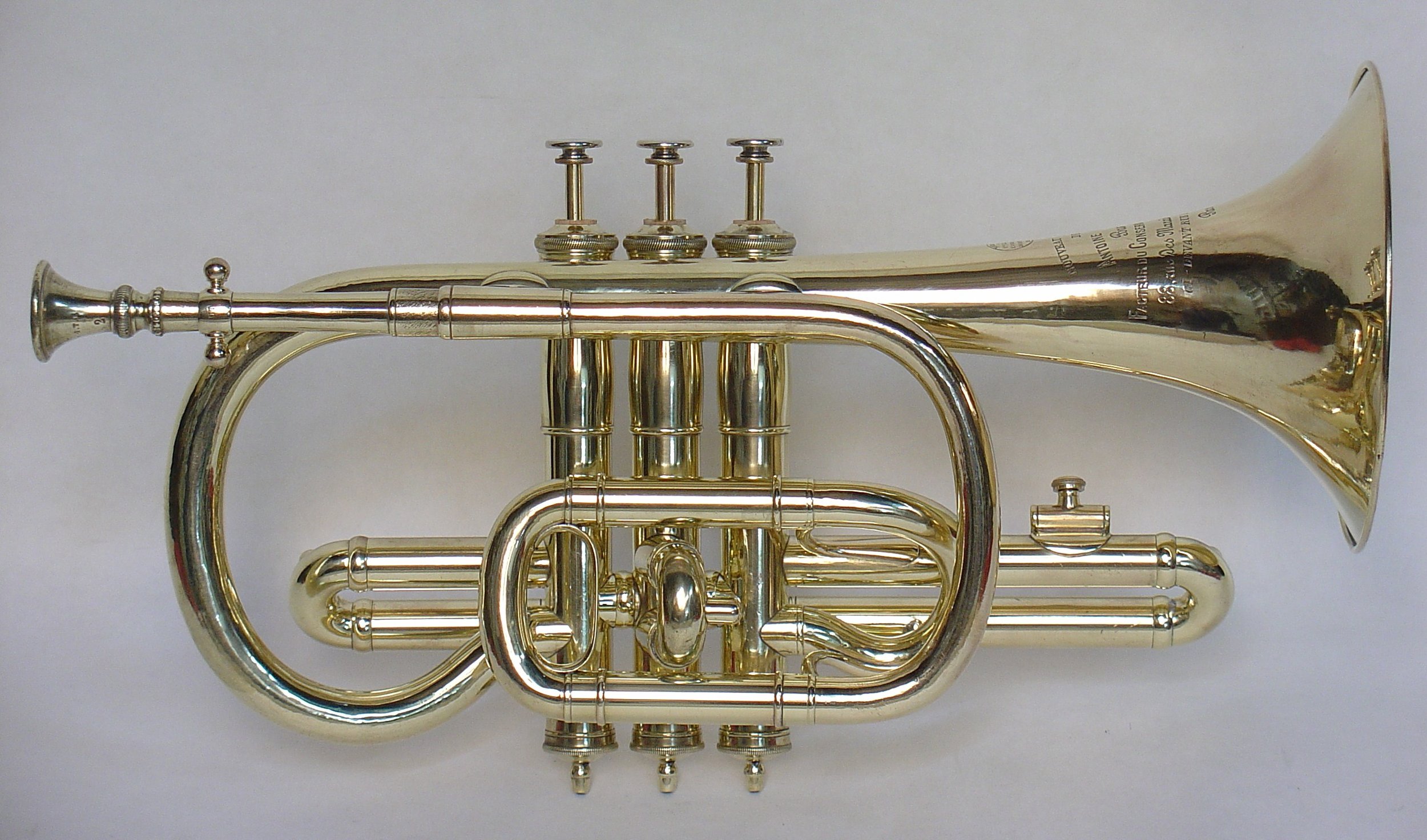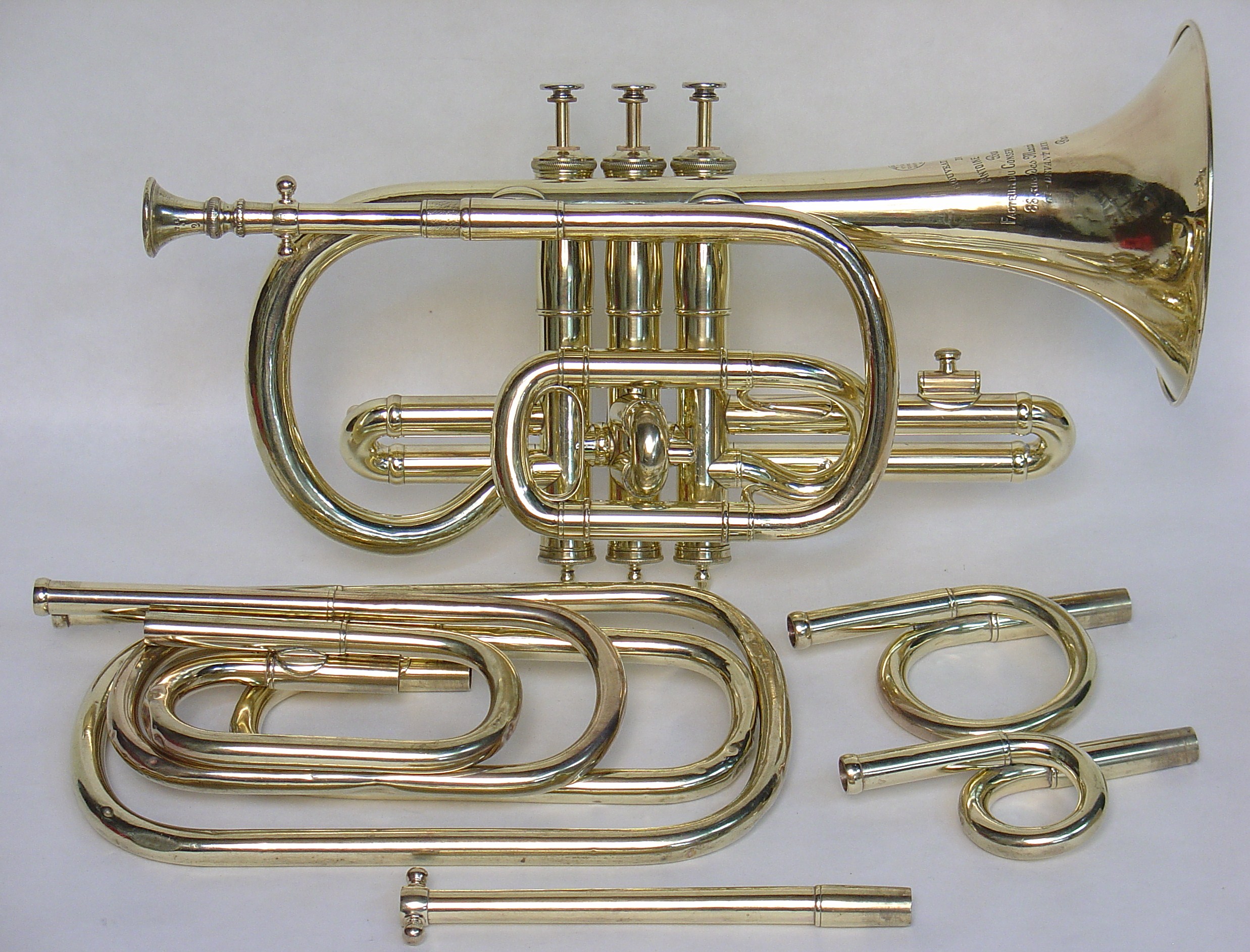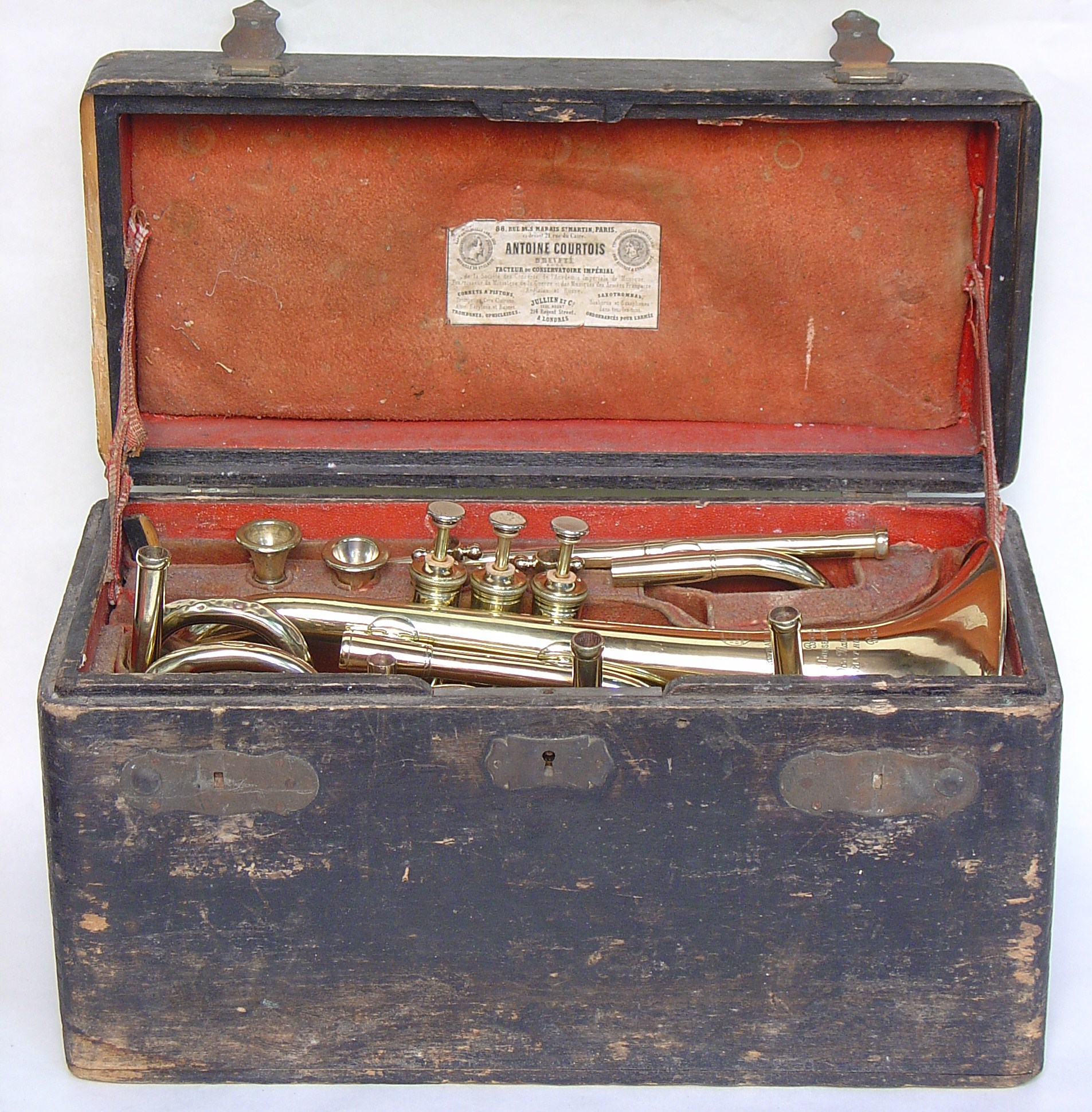Early Courtois Cornet in C
Made in about 1858, this is the earliest cornet pitched in C by Antoine Courtois and among the 15 or so earliest instruments from that shop that we know of. It is a variant of the very earliest Koenig's model Courtois cornets, which seem all to be in Bb. It certainly seemed worthy of a careful restoration, and the kit of parts being fairly complete, an important exercise in preservation.
What was missing is one valve button, two pull knobs, the lower tuning slide tubes, lyre and original mouthpieces (the two pictured are from the period, but not original to this instrument). Also, oddly, the end of the Ab crook has been cut off. In order to keep the cost more reasonable, I didn't spend much time on the larger crooks. The originals are functional as they are and it would be easier to make new crooks than to remove all the dents, if perfect examples were desired.
The mouthpipe shanks are for C and B natural , the crooks put this cornet in Bb, A, Ab, G and F. In addition, there is a coupling crook about the length of the G crook and is used in combination with the G or F crook. Interestingly, when used with the G crook it lowers the pitch to Eb (4 semitones) and when with the F crook, to D (3 semitones).
I also include a photo of this cornet with the F crook in place, showing how well its curves follow those of the bell and mouthpipe. This is just one indication of the importance of details to M. Antoine Courtois. Mr. Emile Meuffels of Amsterdam must agree with me having sent this cornet all the way to me to restore for him.
The restoration process was generally straightforward, removing dents, repairing braces, ferrules and soldering it all back together in the exact shape as it was originally. If you have seen many antique cornets, you may have noticed that it is very common for the bell to slope downwards in relation to the valves. Many people have come to believe that this was an original feature of these cornets, but I can assure you that it isn't true. Very often the bell gets bent down from general rough handling, but at least as often, in the course of repairs it has been soldered to the valve section at that odd angle.
The deformation caused by numerous dents in the bell curve and the removal of those dents causes it to straighten slightly. Forcing the differently shaped bell to fit the valve section causes it to tilt downwards. If the bell curve is forced back to the original shape, it becomes very oval in section. In the most common situation, both of these features are observed. I find this intolerable in my own work, so in such cases, I fill the bell with pitch or other bending matrix and bend the bell back to its original shape. There is a bit of judgement involved when applying such techniques, since ancient and deteriorated brass is likely to loose some structural integrity and could split.
There are cases where it is obvious that the metal is compromised enough to make this technique unwise, especially when the wall thickness is as thin as in this instrument. The example that comes to mind is the Benoit Saxhorn, where the brass is very fragile from intergranular corrosion. Enough zinc has been leached out of the alloy to make it substantially weaker. Such deterioration is part of its history of survival. As bent and corroded as this Courtois cornet appears in the "before" photos, it is actually in quite sound condition, due at least in some part to being stored inside the case for most of its existence.









